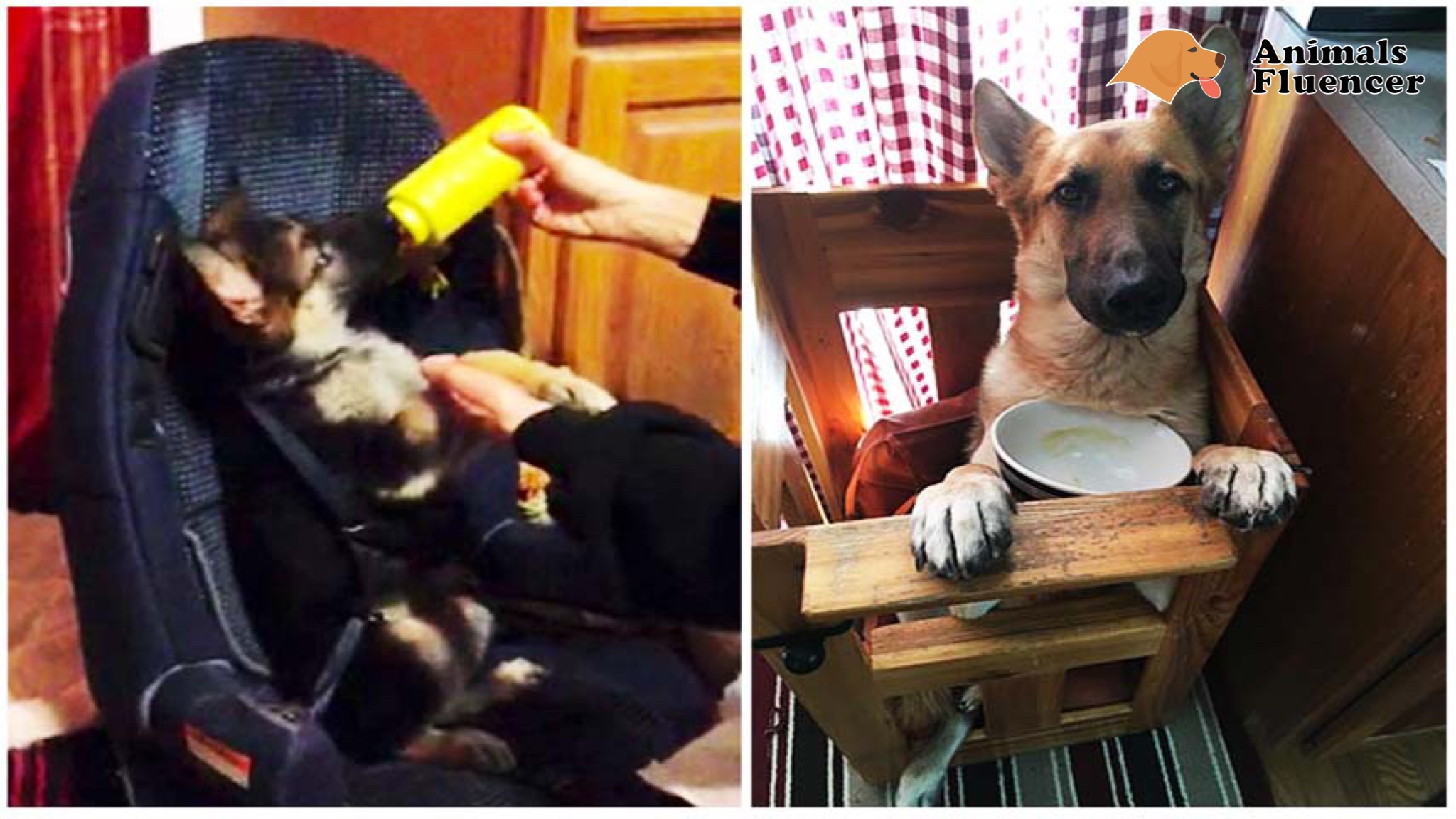
Chuck is a German shepherd dog. When Chuck roams around the farm, he looks just like every other dog. But everything will change during mealtime. Chuck must always eat while sitting upright in a high chair in order to fully assimilate his meals. He would throw up if he tried to eat in any other posture.
When Chuck arrived to the farm, he was welcomed by Laurie Zaleski, the facility’s founder, who opted to retain him and care for him. Chuck, it turns out, has megaesophagus, a condition that affects both cats and dogs.
Megaesophagus is a disorder found in dogs and sometimes cats – and German shepherds are particularly predisposed to the condition. Essentially, the animal’s esophagus grows too large, to the point where it loses the ability to contract its muscles, which is necessary in order to pass food and liquids into the stomach.

When Zaleski found out about Chuck’s diagnosis, Zaleski’s friend wanted to take him to a shelter. But Zaleski was aware that if Chuck goes to a shelter, it will be difficult to find a home for a dog with special requirements like Chuck’s, and that his chance of being euthanized is so high. So she made the choice to take him herself home.
However, Chuck’s megaesophagus was the worst case veterinarians had ever seen, it was extremely difficult to treat surgically. Zaleski rejected the idea of Chuck receiving a feeding tube from veterinarians. She wanted to give Chuck the most normal life possible.
The vet told Zaleski that putting Chuck down might be best, informing her that he would not likely live past the age of 1 – but Zaleski believed in Chuck.

“I researched how he was going to be able to eat and I got a child’s car seat from a friend,” Zaleski said. “He quickly learned to jump in the car seat and eat upright at 3 months old.” Sitting in an upright position while eating allows gravity to gradually pull food into Chuck’s stomach.
Chuck is now a happy 3 years old. He’s since graduated from his car seat to a Bailey chair, commonly used for dogs with megaesophagus to sit in while eating.
At each meal, according to Zaleski, Chuck normally consumes three bowls of a special formula. She waits 10 to 15 minutes for Chuck to finish each bowl before going on to the next.
Zaleski added that when people see Chuck playing around, they can hardly believe he’s the very same Chuck who has grown so accustomed to his Bailey chair – it’s not uncommon to find him napping in it after eating.

“He is completely normal-functioning when he is not eating in his chair,” Zaleski said. “He swims in the pool, plays fetch all day and chases the horses … He is the happiest dog.”




